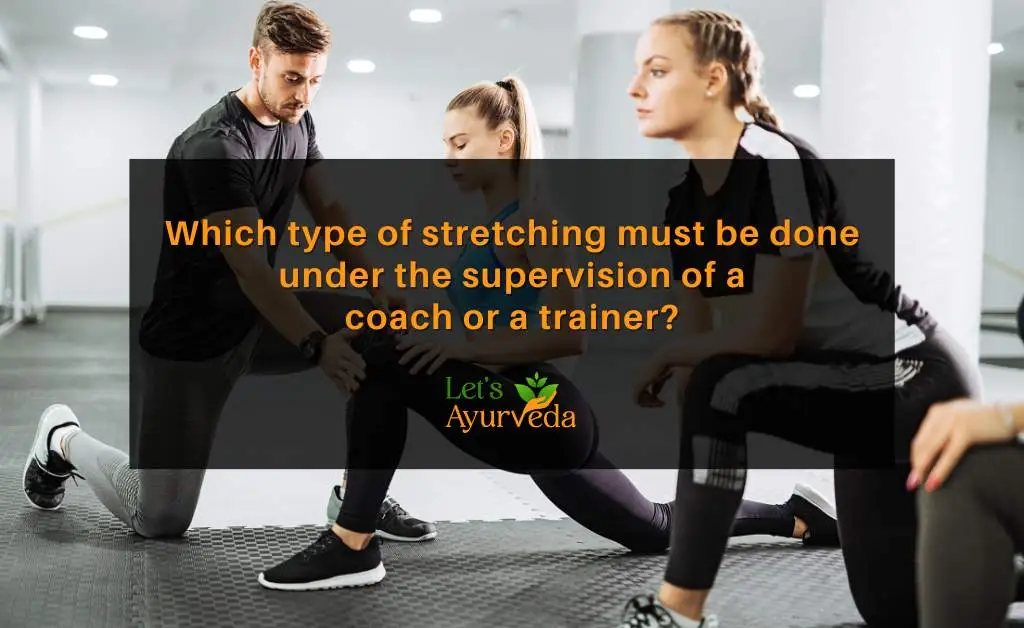Stretching plays a vital role in pursuing better flexibility and improved athletic performance. However, not all stretching exercises are created equal, and some require the watchful eye of a coach or trainer to prevent injuries and ensure effective results. In this article, we will explore the various types of stretching and discuss which ones should be done under professional supervision.
What is Stretching
Stretching is a physical activity that involves deliberately lengthening and elongating your muscles and tendons to improve flexibility, increase range of motion, and enhance overall muscle function.
It's a fundamental component of various fitness routines and sports activities. Stretching exercises typically involve gently pulling or extending specific muscle groups to alleviate tension, reduce stiffness, and improve muscle elasticity.
Stretching can be done in various ways, such as static stretching (holding a stretch position without movement), dynamic stretching (moving through a range of motion), and other specialized techniques like PNF (Proprioceptive Neuromuscular Facilitation). The choice of stretching method often depends on individual fitness goals and the type of physical activity being performed.
Which Type of Stretching Must Be Done Under the Supervision of a Coach or a Trainer?
Stretching can be categorized into various types, each serving a specific purpose. Let's delve into these stretching techniques, highlighting those requiring professional supervision.
Static Stretching
Static stretching involves holding a specific stretch position for an extended period, usually 15-60 seconds. It's commonly used to improve flexibility and cool down after exercise. While it seems straightforward, static stretching can lead to overstretching and injury if not done correctly. Therefore, beginners should consider supervised sessions to avoid overextension.
Dynamic Stretching
Dynamic stretching involves controlled movements through a full range of motion. This type of stretching is excellent for warming up before exercise. Beginners can benefit from a coach or trainer to ensure proper form and technique despite the generally safe nature of the activity.
Ballistic Stretching
Ballistic stretching utilizes bouncing or jerking movements to stretch your muscles deeper. Due to its aggressive nature, it poses a higher risk of injury. It should only be performed under the supervision of an experienced professional.
PNF (Proprioceptive Neuromuscular Facilitation) Stretching
PNF stretching is a technique that involves stretching and contracting muscles, and it is highly effective. It requires precise timing and coordination, so a knowledgeable trainer or coach must guide you.
Isometric Stretching
Isometric stretching involves contracting the muscle being stretched for a brief period before relaxing into a deeper stretch. The intensity of this technique necessitates professional supervision to prevent strains or injuries.
Advanced Yoga Poses
Certain yoga poses, such as deep backbends and inversions, require extensive flexibility and can be dangerous if not performed correctly. A yoga instructor's supervision is essential.
Resistance Band Stretching
Using resistance bands for stretching can lead to overextension if not used properly. A fitness trainer can ensure correct form and prevent injury.
Conclusion
Incorporating stretching into your fitness routine is a great way to enhance flexibility and prevent injuries. While many stretching techniques can be performed independently, it's essential to recognize that specific methods, such as dynamic Stretching, PNF stretching, ballistic stretching, and advanced yoga poses, should only be attempted under the watchful eye of a qualified coach or trainer. Prioritize your safety and maximize the benefits of stretching by seeking professional guidance when needed.
Frequently Asked Questions
1. Can I learn stretching techniques online?
While there are online resources for learning advanced stretches, having an experienced coach or trainer for proper guidance and safety is highly recommended.
2. Are there any age restrictions for supervised stretching?
Age is not necessarily restricted. Before beginning any stretching program, individuals with medical conditions or physical limitations should consult with a healthcare provider.
3. How often should I do supervised stretching sessions?
The frequency of supervised stretching sessions depends on your goals and fitness level. Your coach or trainer can provide personalized recommendations.
4. Can supervised stretching help with sports performance?
Yes, supervised stretching can improve flexibility and mobility and reduce injury risk in sports.
5. Where can I find a qualified coach or trainer for supervised stretching?
You can find qualified coaches and trainers at local gyms, fitness centers, or through online directories. Ensure they have the necessary certifications and experience in stretching techniques.
Also Read: Why Do Activities Like Yoga, Ballet, and Gymnastics Require Better Than Normal Flexibility?






